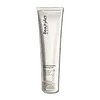What's inside
What's inside
 Key Ingredients
Key Ingredients

 Benefits
Benefits

 Concerns
Concerns

No concerns
 Ingredients Side-by-side
Ingredients Side-by-side

Water
Skin ConditioningGlycerin
HumectantDisodium Cocoamphodiacetate
CleansingSodium Cocoyl Isethionate
CleansingSodium Chloride
MaskingBetaine
HumectantSodium Glycolate
BufferingCoco-Glucoside
CleansingGlyceryl Oleate
EmollientPhenoxyethanol
PreservativePhytic Acid
Acacia Senegal Gum
MaskingXanthan Gum
EmulsifyingCitric Acid
BufferingEthylhexylglycerin
Skin ConditioningSodium Hyaluronate
HumectantInositol
HumectantPolyacrylate Crosspolymer-6
Emulsion StabilisingT-Butyl Alcohol
PerfumingWater, Glycerin, Disodium Cocoamphodiacetate, Sodium Cocoyl Isethionate, Sodium Chloride, Betaine, Sodium Glycolate, Coco-Glucoside, Glyceryl Oleate, Phenoxyethanol, Phytic Acid, Acacia Senegal Gum, Xanthan Gum, Citric Acid, Ethylhexylglycerin, Sodium Hyaluronate, Inositol, Polyacrylate Crosspolymer-6, T-Butyl Alcohol
Water
Skin ConditioningGlycerin
HumectantGlyceryl Glucoside
HumectantDiglycerin
HumectantMethylpropanediol
SolventSodium Lauroyl Methyl Isethionate
CleansingSodium Cocoamphoacetate
CleansingDisodium Cocoamphodiacetate
CleansingPentylene Glycol
Skin ConditioningMethyl Gluceth-20
HumectantPEG-150 Pentaerythrityl Tetrastearate
EmulsifyingCoco-Glucoside
CleansingGlyceryl Oleate
EmollientPanthenol
Skin ConditioningBetaine
HumectantSodium PCA
HumectantPEG-120 Methyl Glucose Dioleate
EmulsifyingHydrolyzed Wheat Protein
Skin ConditioningSodium Hyaluronate Crosspolymer
HumectantAvena Sativa Kernel Extract
AbrasiveAllantoin
Skin ConditioningPhenoxyethanol
PreservativeEthylhexylglycerin
Skin ConditioningTrisodium Ethylenediamine Disuccinate
Lactic Acid
BufferingWater, Glycerin, Glyceryl Glucoside, Diglycerin, Methylpropanediol, Sodium Lauroyl Methyl Isethionate, Sodium Cocoamphoacetate, Disodium Cocoamphodiacetate, Pentylene Glycol, Methyl Gluceth-20, PEG-150 Pentaerythrityl Tetrastearate, Coco-Glucoside, Glyceryl Oleate, Panthenol, Betaine, Sodium PCA, PEG-120 Methyl Glucose Dioleate, Hydrolyzed Wheat Protein, Sodium Hyaluronate Crosspolymer, Avena Sativa Kernel Extract, Allantoin, Phenoxyethanol, Ethylhexylglycerin, Trisodium Ethylenediamine Disuccinate, Lactic Acid
Ingredients Explained
These ingredients are found in both products.
Ingredients higher up in an ingredient list are typically present in a larger amount.
Betaine is a common humectant (a substance that promotes retention of moisture). It's known to be gentle on the skin and can help balance hydration.
This ingredient is best for improving hydration and soothing irritated skin. Studies also show it helps even out skin tone.
Fun fact: Betaine is naturally created in the skin and body. The kind found within cosmetic products can be either plant-derived or synthetic.
Another name for betaine is trimethylglycine.
Learn more about BetaineCoco-Glucoside is a surfactant, or a cleansing ingredient. It is made from glucose and coconut oil.
Surfactants help gather dirt, oil, and other pollutants from your skin to be rinsed away.
This ingredient is considered gentle and non-comedogenic. However, it may still be irritating for some.
Learn more about Coco-GlucosideDisodium Cocoamphodiacetate is a surfactant and helps cleanse skin. It is created from the fatty acids of coconut oil.
Surfactants help rinse oil, dirt, and other pollutants easily from skin. It has a faint fruit-like scent.
Ethylhexylglycerin (we can't pronounce this either) is commonly used as a preservative and skin softener. It is derived from glyceryl.
You might see Ethylhexylglycerin often paired with other preservatives such as phenoxyethanol. Ethylhexylglycerin has been found to increase the effectiveness of these other preservatives.
Glycerin is already naturally found in your skin. It helps moisturize and protect your skin.
A study from 2016 found glycerin to be more effective as a humectant than AHAs and hyaluronic acid.
As a humectant, it helps the skin stay hydrated by pulling moisture to your skin. The low molecular weight of glycerin allows it to pull moisture into the deeper layers of your skin.
Hydrated skin improves your skin barrier; Your skin barrier helps protect against irritants and bacteria.
Glycerin has also been found to have antimicrobial and antiviral properties. Due to these properties, glycerin is often used in wound and burn treatments.
In cosmetics, glycerin is usually derived from plants such as soybean or palm. However, it can also be sourced from animals, such as tallow or animal fat.
This ingredient is organic, colorless, odorless, and non-toxic.
Glycerin is the name for this ingredient in American English. British English uses Glycerol/Glycerine.
Learn more about GlycerinGlyceryl Oleate is the ester of glycerin and oleic acid. This ingredient is mainly an emollient and emulsifier.
Emollients soften and hydrate the skin by creating a thin film on top to trap in moisture. As an emulsifier, glyceryl oleate helps stabilize formulations by preventing ingredients such as oil and water from separating. According to a manufacturer, this ingredient helps helps thicken water-in-oil formulations, shower gels, and hair shampoos.
In some products, this ingredient may be used as a fragrance / perfuming ingredient. The scent of this ingredient is described to be "waxy".
Glyceryl oleate is created from oils rich in oleic acid, such as peanut oil and olive oil.
This ingredient may not be malassezia folliculitis safe.
Learn more about Glyceryl OleatePhenoxyethanol is a preservative that has germicide, antimicrobial, and aromatic properties. Studies show that phenoxyethanol can prevent microbial growth. By itself, it has a scent that is similar to that of a rose.
It's often used in formulations along with Caprylyl Glycol to preserve the shelf life of products.
Water. It's the most common cosmetic ingredient of all. You'll usually see it at the top of ingredient lists, meaning that it makes up the largest part of the product.
So why is it so popular? Water most often acts as a solvent - this means that it helps dissolve other ingredients into the formulation.
You'll also recognize water as that liquid we all need to stay alive. If you see this, drink a glass of water. Stay hydrated!
Learn more about Water